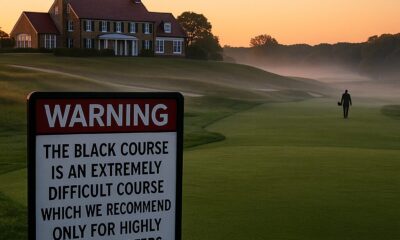Blog
You Probably Didn’t Know These 18 Facts About Jon Rahm
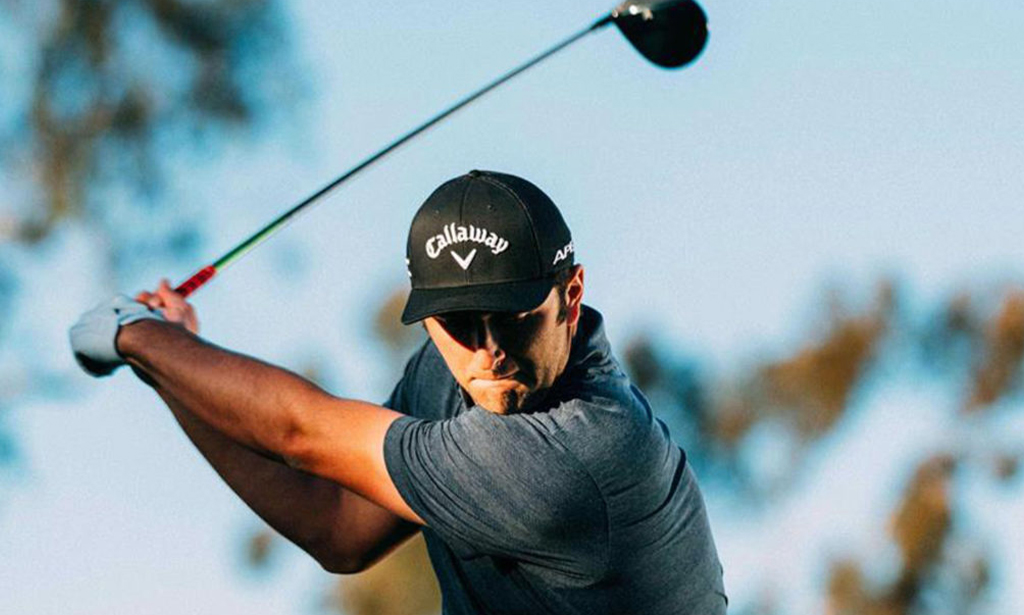
Jon Rahm was already one of the biggest stars in golf before his career-defining victory at the U.S. Open. The 26-year-old Spaniard’s birdie-birdie finish was the perfect punctuation mark on Rahm’s first major title.
You know Rahm for his elite off-the-tee game (second on tour); representing Europe at the 2018 Ryder Cup, where he defeated his idol, Tiger Woods, in Sunday singles; and maybe his on-course temper. But we bet you might not know these other 18 things about the first Spanish champion in U.S. Open history.
Rahm credits the 1997 Ryder Cup as being huge for getting his family into golf.
Rahm’s father, Edorta, had never played golf or seen it in person until the Ryder Cup came to Valderrama in 1997. Rahm says he started playing and got lessons when he was 6 or 7 years old.
Among the other sports Rahm tried as a kid in Barrika, Spain, was Kung Fu.
Rahm says he played five sports up until he was 14 years old (soccer, canoeing, Jai alai, golf and Kung Fu). Rahm was a fan of martial arts movies as a kid, and when one of his friends started doing Kung Fu, he got into it.
Rahm’s local coach, Eduardo Celles, started working with the Spaniard when he was 13, and he encouraged him to shorten his swing.
Rahm explains that he struggled with accuracy as a junior but still hit it farther than anyone else. Celles encouraged him to shorten his backswing for more control, and to this day, Rahm has one of the shortest backswings on tour.
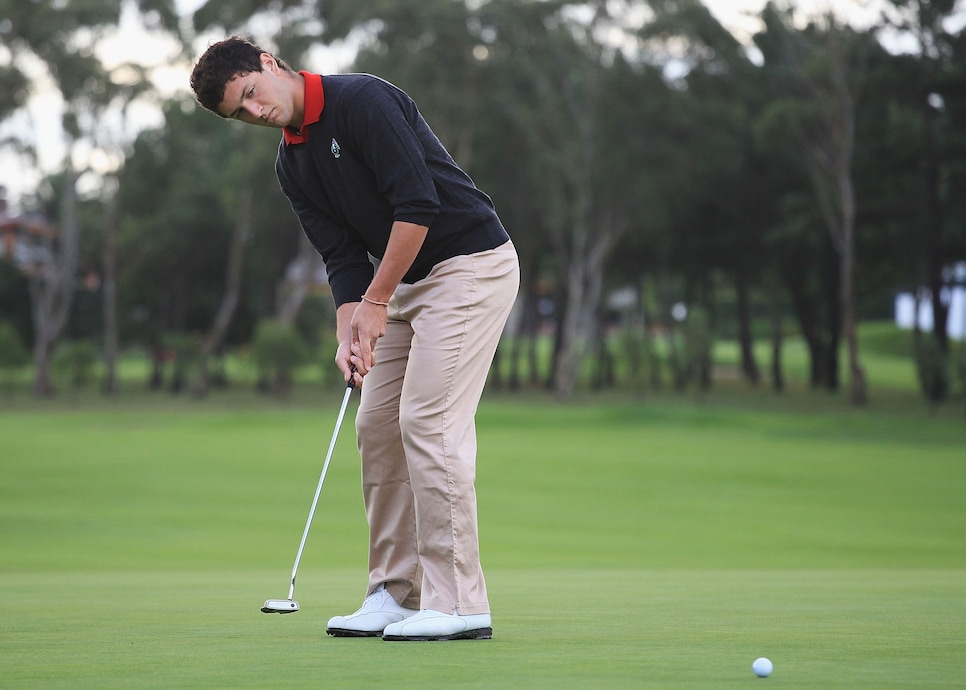
Matthew Lewis/R&A
He had never been to the United States—and spoke almost no English—before arriving in Tempe, Ariz., in fall 2012 to enroll at Arizona State.
Phil Mickelson’s brother, Tim, was the men’s golf coach at the time, and recruited Rahm when the Spaniard had very few offers. Rahm had to rush to take the SATs and verify his qualifications before being eligible at Arizona State in the fall, just a few months after Mickelson contacted him.
Tim Mickelson gets credit from Rahm for helping him learn English: Mickelson would make him and another Spanish-speaking teammate do 10 burpees for every Spanish word they used.
Though Rahm has said that learning the lyrics to rap songs helped him pick up slang and other English phrases not taught in a class, he says the rap part was exaggerated by the media after his win at the 2017 Farmers Insurance Open. He does cite Kendrick Lamar’s “Swimming Pools” and Eminem’s “Love the Way You Lie” as songs that particularly helped.

As a junior, Rahm earned a sponsor’s invitation into the 2015 Waste Management Phoenix Open and finished T-5.
It was the first time since Chris Wood’s T-5 at the 2008 Open Championship that an amateur finished T-5 or better in a PGA Tour event. And Rahm was just the second amateur to finish in the top five on tour since Justin Rose’s T-4 at the 1998 Open.
Jon Rahm in college.pic.twitter.com/7SHZDzX9gA— GOLFTV (@GOLFTV) June 21, 2021
Rahm became the first multiple-time winner of the Ben Hogan Award, which honors the best player in college golf.
He also rose to the No. 1-ranked spot on the World Amateur Golf Rankings, having amassed 11 tournament victories at Arizona State, the second-most in school history (trailing only Phil Mickelson). Despite the success in pro events as an amateur, Rahm stayed four years at ASU—as a promise to his parents.
Following a T-23 at the 2016 U.S. Open—where he was the only amateur to make the cut—Rahm turned professional.
In just seven starts over the rest of the 2016 season, Rahm finished T-2 at the RBC Canadian Open, T-3 at the Quicken Loans (his first pro start) and collected just a little more than $1 million in on-course earnings.
Rahm treated himself to a Porsche with those on-course earnings in the fall of 2016.
He told Golf Digest then: “It’s good for me to see it, wake up every day and see what I’ve accomplished the last eight years.”
The Spaniard showed up to our last shoot with him in 2019 in a shiny Arizona State-maroon Mercedes AMG G 63.
In addition to being Rahm’s college coach, Tim Mickelson was also Rahm’s agent after the Spaniard turned pro.
Mickelson left his head coaching position at ASU in 2017 to pursue an agent career at Lagardere Sports, representing Rahm until Phil Mickelson asked his brother to become his caddie.
Jon Rahm met his wife, Kelley Cahill, at Arizona State—where she was on the track and field team and threw javelin.
Rahm proposed to his college sweetheart while hiking near Torrey Pines in 2018 prior to the U.S. Open. And Rahm had the ring custom-built, as he told Golf.com in 2018: “I designed it. So Brian Stuard’s [wife] is a jeweler and is a really good friend of ours. So Kelley was talking to her. She knew what Kelley wanted, but I had my own ideas. Basically, with her help, I designed the ring. She wanted to pick the diamond, but I knew what I wanted. I designed what’s around the ring. It’s supposed to look like a crown and an engraving inside. I had a big part in it.”
The two got married in December 2019 in Bilboa, Spain.
The ceremony was in the Basilica de Begoña in Rahm’s hometown.
With his wife, Kelley, due to give birth to their first son in April 2021, Jon vowed to withdraw from the Masters if she went into labor during the tournament.
Jon never had to follow through on the promise as Kepa was born a few days prior to Augusta. And though his son was just 10 weeks old when Dad won the U.S. Open, Rahm remarked: “he won’t remember this … but I do.” Rahm will get to tell his son all about it one day.

Known for showing his emotions on the course, Rahm credits a shift mentally on Sunday at the 2021 PGA in being calmer on the course.
He said about that shift over the past month: “I still had that grit, but it was almost like each miss bothered me less. I couldn’t tell you why.” Perhaps that’s fatherhood adding that, you know, perspective.
He has worked on his temper with a mental coach, Joseba Del Carmen, who used to be a bomb-disposal expert.
Rahm told Golf Digest this in 2019: “I used to think that golf is my life, that it’s who I am. [Del Carmen] was the first person to make me realize that it’s not, and that golf and life are very similar. The happier I am in life, the better I’m going to play. But I’m much more interested in raising a family and being a good husband and father than I am in golf. Don’t get me wrong—I want to be the best golfer I can be. If I had a gun to my head and had to choose between having only one or the other, I wouldn’t pick golf. I hope people don’t take that as me thinking I’d quit, but I’d choose family every time.”
On Saturday at the Memorial, Rahm had opened up a six-shot lead when he was forced to withdraw after testing positive for COVID-19.
Rahm was told by PGA Tour officials immediately after stepping off the 18th green on Saturday, and the scene unfolded while TV cameras were still running—capturing an emotional Rahm on TV. To his credit, Rahm said before the U.S. Open he did not fault the PGA Tour for how it was handled—a sentiment he reiterated in his post-round interviews.
This is not the first time Rahm has earned the No. 1 spot in the Official World Golf Rankings.
The Spaniard first ascended to the top spot after winning the 2020 Memorial last July. He was ranked No. 1 for two weeks before Justin Thomas surpassed him, then Rahm retook the No. 1 ranking for two more weeks before Dustin Johnson was ranked No. 1 for the past 43 weeks.
The $2.25 million first-place prize Rahm earned at the U.S. Open gives the Spaniard more than $28 million in PGA Tour on-course earnings.
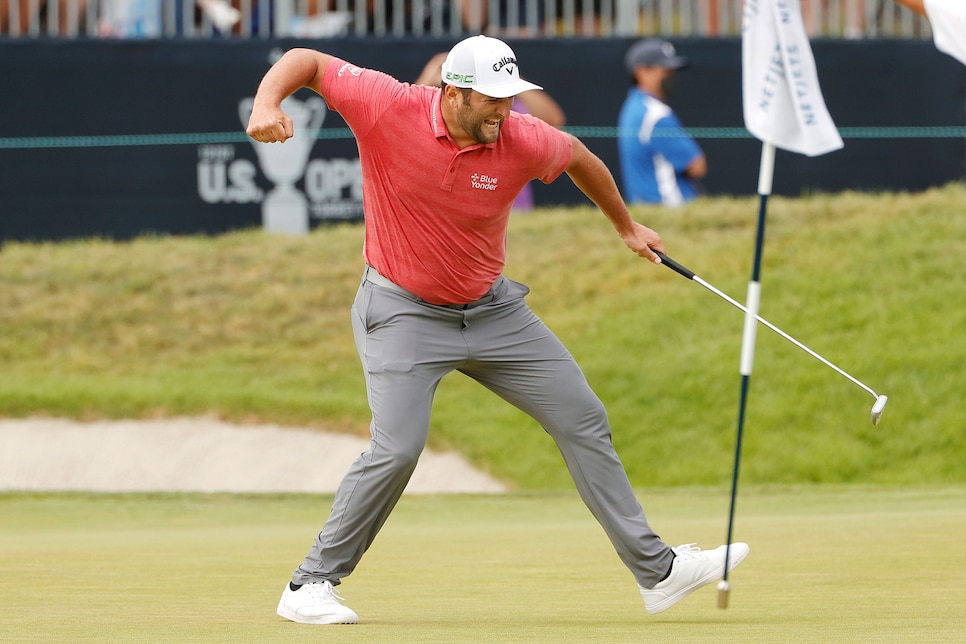
Ezra Shaw
In addition to Rahm’s six PGA Tour victories, he also boasts six European Tour titles—amassing more than 6.4 million euros for those wins.
This article originally appeared on Golf Digest.
Blog
The Unofficial Rules of Golf: A Gentleman’s Guide to Not Being Judge Smails
The official rulebook is thicker than a dictionary and twice as boring. Let’s talk about the rules that really matter on the course: how to have fun, respect the game, and not be a stick-in-the-mud. Hint: It involves less plaid and more cosmic harmony.
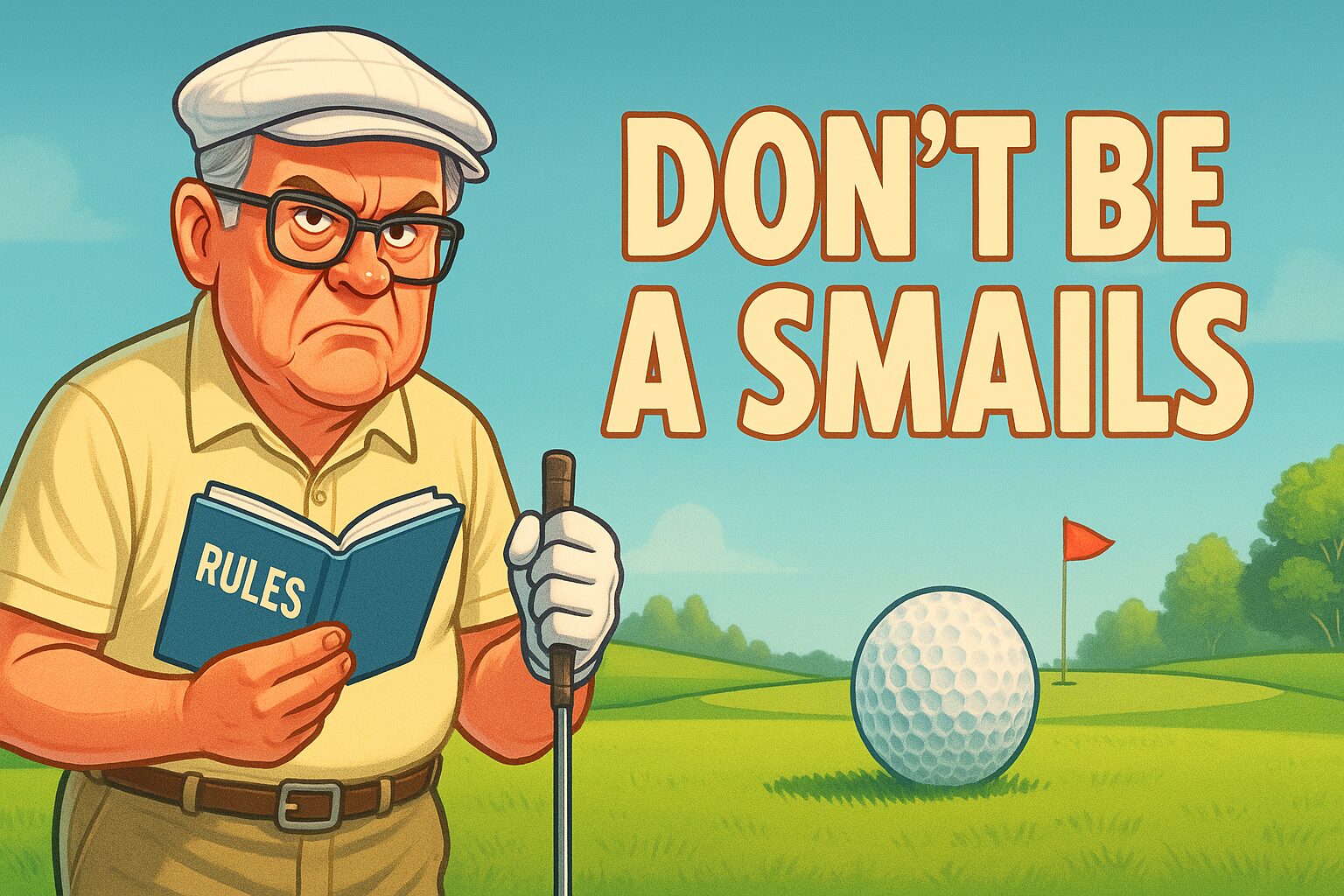
You’ve seen him. I’ve seen him. The guy who quotes the USGA rulebook like it’s scripture. He’ll happily tell you your ball moved a quarter of an inch when you addressed it, costing you a penalty stroke. He’s got a plumb bob for a three-foot putt and the personality of a rake. He is, in spirit, Judge Smails. And let’s be honest, nobody wants to be Judge Smails.
The real game of golf, the one that keeps us coming back, isn’t played by those rules. It’s played by a higher law. An unwritten code of conduct that’s all about flow, friendship, and the pursuit of that one perfect shot. It’s a gentleman’s agreement with the universe.
So, let’s talk about the rules that actually matter.
1. The Cosmic Readjustment (aka The Mulligan). Your first tee shot is a mess. It goes sideways into the woods where the gophers play. The Smails of the world would tell you to take a penalty and hack it out. I say the universe is just getting warmed up. The “breakfast ball” isn’t cheating; it’s a course correction. It’s an agreement among friends that a round of golf shouldn’t be ruined before it even begins. Take another. The Dalai Lama would want you to.
2. The Art of Flow (aka Pace of Play). This isn’t about rushing. Rushing is a fool’s game. This is about flow. It’s about being ready to hit when it’s your turn. It’s about watching your friend’s shot so you can help them find it. It’s about moving with a purpose, not like you’re searching for your car keys in a dark parking lot. Don’t be the anchor that drags the whole group down. See the line, hit the ball, walk on. Nanananana.
3. The Circle of Friendship (aka Gimmes). Is the putt inside the leather? Good enough. Pick it up. Life is too short to watch your buddies sweat over an 18-inch putt for a double bogey. A gimme isn’t just a time-saver; it’s a gesture of goodwill. It says, “I trust you, you trust me, and neither of us needs the anxiety of missing this tiny putt.” It’s good for the karma, and even better for the pace of play.
4. The Final Verdict (aka The 19th Hole). The most important rule is this: no matter what happened out there, you shake hands on the 18th green and settle things over a cold drink at the 19th. The guy who shot an 82 and the guy who shot a 102 are equals in the clubhouse. The stories get better, the putts get longer, and the bad shots fade away. This is where the real game is won.
So, forget about the fine print. Focus on the feeling. Be a good playing partner, enjoy the walk, and don’t be a Smails. You’ll find your score starts to take care of itself.
Did this speak to your soul? Pass it along to your foursome to make sure everyone is on the same page. For more deep thoughts from the fairway, be sure to follow us on social media. It’s the right thing to do.
Blog
When Golf Gadgets Fail: Navigating Common Tech Mishaps on the Golf Course
A Look at What Happens When Modern Golf Gadgets Go Wrong

Imagine this: you’re on the golf course, teeing off on a beautiful, sunny day. With the help of your trusty golf gadget, you’re confident you’ll hit a birdie or even an eagle. But just when you’re about to swing, your gadget malfunctions. Suddenly, your perfect game is thrown into chaos. Welcome to the world of technology fails, where even the most advanced golf devices can sometimes let you down. In this article, we’ll explore some common tech fails and provide some tips on how to handle them.
When Golf Gadgets Let You Down
Modern golf devices, from smart clubs to digital scorecards to GPS-enabled watches, have revolutionized the game. They provide golfers with real-time data, helping them refine their swing, choose the right club, and navigate the course. But what happens when these devices fail?
Unreliable Data
One of the most common golf gadget fails is inaccurate or unreliable data. GPS devices might show the wrong distance to the pin, swing analyzers might give incorrect feedback, and digital scorecards might miscalculate your score. This can be frustrating, especially when you’re relying on these devices to improve your game.
Battery Drain
Another common issue is battery drain. Many golf gadgets require a significant amount of power, and if they’re not properly charged, they can die in the middle of a game. This leaves you without the data you need to make informed decisions on the course.
Technical Glitches and Malfunctions
Sometimes, golf devices just stop working. They might freeze, crash, or refuse to turn on. These technical glitches can be caused by software bugs, hardware issues, or even user error.
Preventing Golf Gadget Fails
While it’s impossible to prevent all golf gadget fails, there are steps you can take to minimize the risk.
Regular Updates
Keeping your devices updated can help prevent software-related issues. Regular updates often include bug fixes and improvements that can enhance the performance of your device.
Proper Charging
To avoid battery-related problems, make sure to fully charge your devices before hitting the course. Some devices also have power-saving modes that can help extend battery life.
Backup Plan
It’s always a good idea to have a backup plan in case your devices fail. This might mean carrying a traditional scorecard or having a basic understanding of how to calculate distances without a GPS.
When Gadgets Go Wrong: The Bottom Line
Golf gadgets are a fantastic tool for any golfer looking to improve their game. However, like all technology, they can sometimes fail. By understanding the common issues and how to prevent them, you can ensure you’re prepared for any tech-related hiccups on the course. After all, golf is about more than just the gadgets—it’s about the experience, the skill, and the love of the game.
Blog
Mastering the Art of Overcoming Choking under Pressure: Strategies for Peak Performance
Learn the skills needed to stay calm under pressure.
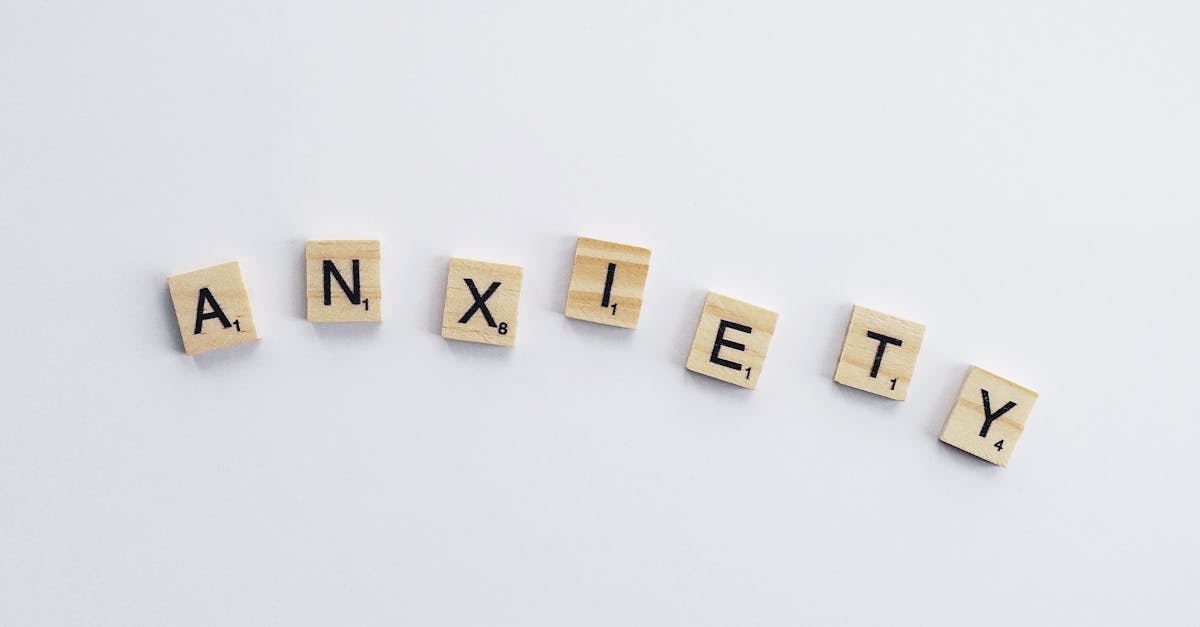
Imagine this: you’ve spent countless hours honing your skills, preparing for that big presentation, important meeting, or decisive sports match. But, when the big moment arrives, instead of performing at your best, your mind goes blank, your hands shake, and you flub it. The dreaded phenomenon of ‘choking under pressure’ can strike anyone, from the seasoned professional to the eager amateur. So, how do you overcome this common mental roadblock? In this article, we’ll explore effective strategies to help you conquer the fear of choking and elevate your performance under pressure.
Understanding Choking under Pressure
Before you can overcome choking, it’s crucial to understand what it is. Psychologists define choking as performing below your ability under pressure. This can be due to heightened anxiety, overthinking, or fear of failure. The irony is, the more you care about performing well, the more likely you are to choke.
Why Do We Choke?
Several factors contribute to choking under pressure. Here are a few:
-
- Fear of Negative Evaluation: The fear of being judged negatively by others can cause significant anxiety, leading to poor performance.
- High Stakes: When the stakes are high, and the outcome is important, the pressure can cause you to underperform.
- Overthinking: The tendency to scrutinize every detail in high-pressure situations can divert your focus from the task at hand.
Strategies to Overcome Choking
Now that we understand why we choke, let’s delve into strategies to prevent it:
- Practice Under Pressure: Simulate high-pressure situations during practice to acclimate yourself to the stress.
- Focus on the Process, Not the Outcome: Concentrating on the process helps keep your mind focused and prevents overthinking.
- Use Positive Affirmations: Positive self-talk can boost your confidence and reduce anxiety.
Case Studies: Athletes Overcoming Choking
Many successful athletes have overcome choking to deliver exceptional performances. Take Michael Jordan, for example. He often missed crucial shots early in his career but used these failures to fuel his determination and eventually became renowned for his clutch performances. Similarly, Serena Williams has bounced back from choking in several matches to claim victory, demonstrating her mental toughness.
Choking under pressure is a common phenomenon, but with the right strategies, it can be overcome. By understanding the causes of choking and implementing techniques like practicing under pressure, focusing on the process, and using positive affirmations, you can learn to perform at your best when it counts the most. Remember, it’s not about never feeling pressure; it’s about learning how to thrive within it.
As Michael Jordan said, “I’ve missed more than 9,000 shots in my career. I’ve lost almost 300 games. 26 times, I’ve been trusted to take the game-winning shot and missed. I’ve failed over and over and over again in my life. And that is why I succeed.” So, next time you face a high-pressure situation, think of it as an opportunity to grow, not a threat to be feared.
If you’ve enjoyed this article and want to learn more about mastering your mental game, subscribe to our newsletter for more tips and strategies. Or, if you’re ready to take your mental toughness to the next level, check out our other articles designed to help you conquer pressure and perform at your peak.
-

 Product Review6 years ago
Product Review6 years agoThe Perfect Practice Putting Mat Review by Jason Tenzer
-

 Blog4 years ago
Blog4 years agoLoophole Rule Offers PGA Tour Pros a Mulligan
-

 Blog4 years ago
Blog4 years ago2021 Buyer’s Guide: The Top 10 Value Golf Balls For Distance & Feel
-

 Blog5 years ago
Blog5 years agoGolf Marriage Counselor
-

 Product Review6 years ago
Product Review6 years agoTHE ADJUSTABLE IRONS: WALKING STICKS GOLF CLUBS
-

 Blog6 years ago
Blog6 years ago9 Biggest Chokes Of The Past Decade
-

 Blog4 years ago
Blog4 years agoWhat Your Golf Clubs Say About You
-

 Equipment6 years ago
Equipment6 years agoOHK Sports Interview by Jason Tenzer





